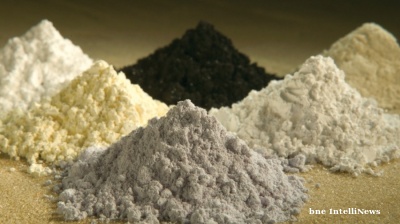The US Fed has not increased interest rates, just talked of increasing rates – not even by that much – and global stock exchanges lost $4.2 trillion in week. All this because the market seems to be anticipating that the Fed will start selling down its bond portfolio and raise interest rates four or five times this year, a quarter percent each time.
The reason the Fed has abruptly shifted from QE (quantitative easing) to QT is that it has suddenly has woken up to the fact that inflation is not just transitory. And it is nearly impossible for a government to be re-elected in times of high inflation.
Why is QT bound to fail as a tool to tame inflation?
- Raising interest rates does not address inflationary supply-side constraints
There are at least five major inflationary supply side constraints where no amount of QT will remove the inflationary bottlenecks:
- Energy Prices. Oil and gas have experienced incredible momentum over the past months, with considerable room to run in the coming months. There have been years of underinvestment in drilling for oil and gas; investors are afraid of legislation that may penalise carbon fuels. Remember the 1970’s energy crisis, and its effect on inflation? Only this one is self-induced: in the Western world we have not planned adequately for the shift from fossil to alternative fuels. Meanwhile, the surge in electrification puts price pressures on copper, nickel, lithium and other materials required for electrification, further fuelling inflation.
- Microchips. The number of microchips required in many industries (cars, intelligent homes, robotics, appliances, Internet of Things, etc) is growing exponentially. Do not count on microchip shortages being resolved soon.
- Labour. The participation rate in the US labour force is at an all-time low, giving labour negotiating power for the first time in decades. Coronavirus (COVID-19) causes absence from the work force in both the short run (illness) and long run (people take early retirement or shun certain industries).
- Logistics. The price of container shipping today is multiples of what it was a couple of years ago. It is highly uncertain as to when this supply bottleneck will be resolved – probably at least a year or two.
- Agriculture. The sudden surge in fertiliser prices will, over the coming year or two, likely work its way through the value chain of most agricultural commodities, right down to the price of vegetables and meat at your local grocery store.
Will raising interest rates solve any of the above supply-side bottlenecks? While higher interest rates can diminish asset bubbles, I do not see them significantly slowing Consumer Price Inflation. (Not unless they trigger a recession or depression that affects overall demand).
(b) Real interest rates will likely remain negative despite nominal interest rates rising
Nominal inflation is currently clocking over 7% per annum in the US (many measures put inflation even higher), with 10-year treasury yields below 2%, meaning that the real interest rates are in the range of negative 5%. Even the current talk of four or five quarter percent rate hikes (e.g. a total of 1.25%) this year was already enough to send markets into a tailspin. That is only a small portion of the gap. If inflation remains constant or increases, there is no way the Fed can move the economy into positive real interest rate territory – a prerequisite for quelling inflation – without triggering a major recession.
Remember Paul Volcker? He had to raise interest rates to 16% in 1980 to quash inflation. Remember the massive pain at the time in the business world. But the world is so much more indebted today than in 1980 – in my opinion it is unable to tolerate the pain associated with high interest rates that would be needed to quash inflation. The US national debt at $30 trillion ($238,000 per taxpayer!) means a one percent rise in interest rates costs the government another $300bn per annum, at a time when total tax revenues are in the range of $4 trillion, the deficit is near $3 trillion and social security payments are spiralling out of control.
So what’s the solution? Sad to say there is no ideal solution. But there is a greater evil and a lesser evil.
If the Fed first raises interest rates sufficiently to stifle inflation, it will crash the economy, after which further stimulus will be required.
In the alternative, government could adopt more prudent fiscal and monetary policies, while harnessing the existing negative interest rates environment to help the US (and the world) inflate out of national debt.
The latter strikes me as the lesser evil – although costs are huge: savers and pensioners always foot the bill for this type of financial repression. There is precedent: this strategy quite successfully inflated away the post-World War II debt of the United States. I see no better way out of the current debt bubble and inflationary cycle.
Les Nemethy is the CEO and founder of Euro-Phoenix Financial Advisors Ltd. and a former World Banker.
Opinion

Don’t be fooled, Northern Cyprus’ new president is no opponent of Erdogan, says academic
Turkey’s powers-that-be said to have anticipated that Tufan Erhurman will pose no major threat.

COMMENT: Hungary’s investment slump shows signs of bottoming, but EU tensions still cast a long shadow
Hungary’s economy has fallen behind its Central European peers in recent years, and the root of this underperformance lies in a sharp and protracted collapse in investment. But a possible change of government next year could change things.

IMF: Global economic outlook shows modest change amid policy shifts and complex forces
Dialing down uncertainty, reducing vulnerabilities, and investing in innovation can help deliver durable economic gains.

COMMENT: China’s new export controls are narrower than first appears
A closer inspection suggests that the scope of China’s new controls on rare earths is narrower than many had initially feared. But they still give officials plenty of leverage over global supply chains, according to Capital Economics.




